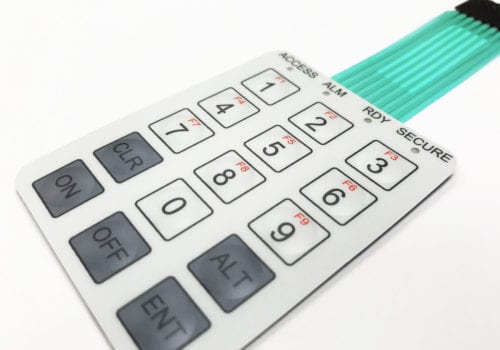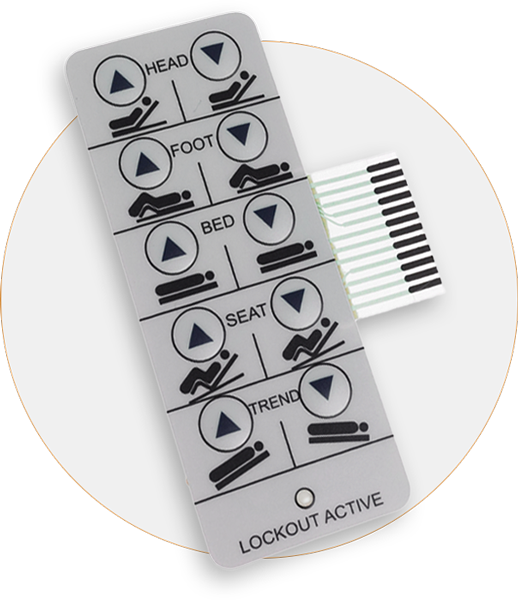Why Membrane Switches Are Preferred for Their Thin and Compact Styles
Discover the Future of Control Interfaces: Why Membrane Layer Changes Are Acquiring Appeal
As sectors significantly prioritize reliable and straightforward control interfaces, membrane layer switches are arising as a compelling option that combines capability with style adaptability. Their durability and portable nature make them particularly matched for a variety of applications, from medical care to consumer electronic devices. With the rise of wise modern technology and sustainability issues, the capacities and advancements surrounding membrane switches over warrant closer assessment. What specific benefits do they offer that could redefine our interactions with modern technology in the coming years?
Understanding Membrane Switches
Membrane layer buttons are indispensable parts in modern-day digital tools, offering as user interfaces in between users and devices. These switches are composed of several layers, usually including a graphic overlay, a spacer layer, and a circuit layer.

Resilience is an additional vital function, as membrane layer switches can be designed to withstand ecological elements such as moisture, dust, and chemicals. This durability makes them optimal for applications in rough problems. On the whole, comprehending the framework and function of membrane switches is crucial for valuing their role in the advancement of interface in today's technology-driven world.
Trick Benefits of Membrane Buttons
Using a variety of advantages, membrane switches have actually come to be a favored choice in numerous applications (Membrane Switches). One of the primary advantages is their compact style, making it possible for producers to maximize area in gadgets without jeopardizing capability. Membrane layer buttons are light-weight, which is specifically beneficial in mobile electronic gadgets

In addition, these buttons give superb durability. Constructed from flexible products, they are resistant to dirt, wetness, and a range of ecological factors, making them appropriate for harsh problems. This longevity often translates into a much longer life expectancy compared to standard mechanical buttons.
Moreover, membrane changes permit seamless integration of graphics and signs, providing visual versatility and improving user experience. Customization choices are considerable, enabling brand names to develop special interfaces that straighten with their product identification.
The flat surface of membrane layer changes protects against the accumulation of dust and gunk, making them optimal for hygienic atmospheres. Membrane layer switches are cost-effective, as they can be created in high quantities at reduced expenses, making them obtainable for a wide range of markets.
Applications Across Industries

A myriad of markets are increasingly embracing membrane switches due to their adaptability and capability. These regulate user interfaces are especially common in the auto field, where they are used in control panels and infomercial systems, giving a easy to use and streamlined interface. In the clinical field, membrane layer switches over facilitate the procedure of diagnostic equipment and patient tracking systems, ensuring dependability and ease weblink of usage in crucial situations.
Furthermore, the consumer electronics sector advantages from membrane buttons in devices such as microwaves and remote controls, enabling streamlined layout and boosted longevity. Membrane Switches. The aerospace market also utilizes membrane layer switches in cockpit controls, where room restrictions demand reliable and compact layout remedies
Additionally, the commercial market utilizes membrane layer switches in machinery control panels, offering strength versus extreme settings and making sure operational effectiveness. Retail settings have actually accepted membrane switches in point-of-sale systems, improving customer interaction while keeping visual appeal.
Layout Fads in Membrane Layer Switches
Evolving alongside technological advancements, style fads in membrane layer buttons are progressively concentrated on boosting customer experience and visual appeal. Modern membrane layer switches are being designed for simplicity and user-friendly use, enabling individuals to browse user interfaces easily. This shift towards user-centric design highlights responsive comments, ensuring that individuals receive immediate verification of their activities.
In addition, customizable graphics and shades are coming to be standard attributes in membrane button layouts. This adaptability enables makers to create tailored user interfaces that align with branding and certain customer needs. The consolidation of backlighting is one more popular trend, as it not just improves visibility in low-light problems but likewise includes a visually striking aspect to the total style.
Moreover, the fad in the direction of lightweight and slim materials is getting grip, permitting sleeker styles that can flawlessly integrate into different applications. This change not just improves appearances but also adds to the general capability and sturdiness of the buttons. Environment-friendly products are significantly being made use of, mirroring a more comprehensive activity in the direction of sustainability in item layout. These layout trends jointly underscore the expanding significance of combining form and feature in the growth of membrane layer buttons, inevitably improving the customer experience.
Future Outlook for Control Interfaces
The future of control user interfaces is positioned for considerable change as emerging modern view technologies remain to reshape user communications across various devices. The combination of sophisticated materials, such as adaptable electronics and why not find out more conductive inks, will enhance the convenience and performance of membrane switches, making them significantly adaptable to an array of applications. Furthermore, the rise of the Net of Things (IoT) will certainly drive demand for even more user-friendly, user-friendly user interfaces that can seamlessly incorporate with smart tools.
As synthetic knowledge and device learning progress, control user interfaces will likely incorporate more tailored functions, permitting users to connect with devices in methods that are tailored to their preferences and behaviors (Membrane Switches). This shift towards user-centric layout will position membrane layer switches as a crucial player in the marketplace, especially in markets like medical care, automobile, and customer electronics
Moreover, the press for sustainability will certainly encourage producers to check out eco-friendly materials and production techniques, making certain that the future of control interfaces aligns with ecological factors to consider. Generally, as modern technology proceeds to advancement, membrane layer buttons will certainly come to be significantly innovative, paving the way for innovative control services that improve customer experience and functional performance throughout varied sectors.
Verdict
In conclusion, the increasing adoption of membrane switches highlights their significance in the development of control interfaces. Their compact layout, durability, and personalization choices line up with the demands of contemporary technology across various industries. As user-friendly user interfaces come to be necessary in the context of IoT and AI improvements, membrane switches are placed to play a critical duty. The continuous patterns towards sustainability even more enhance their allure, making certain that membrane switches will remain integral to future technical developments.
As sectors progressively prioritize reliable and easy to use control user interfaces, membrane switches are arising as a compelling solution that incorporates capability with layout versatility.Longevity is one more vital feature, as membrane layer buttons can be designed to withstand ecological factors such as wetness, dirt, and chemicals.Evolving alongside technical innovations, design patterns in membrane layer buttons are increasingly focused on improving customer experience and aesthetic appeal. Modern membrane layer buttons are being designed for simplicity and user-friendly usage, permitting customers to navigate interfaces effortlessly. These style patterns jointly emphasize the expanding importance of combining form and function in the advancement of membrane layer buttons, inevitably improving the customer experience.